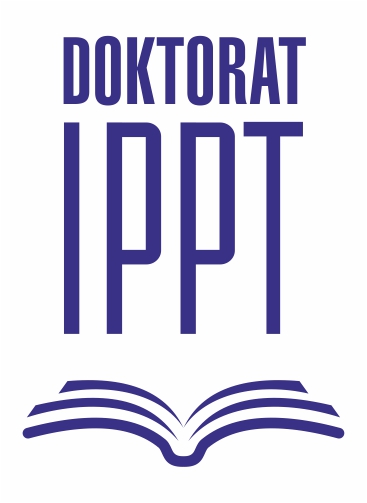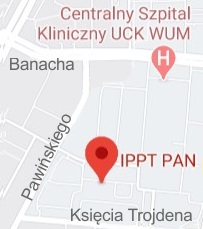| 1. |
Iman P.♦, Salim B.♦, Francesco M.♦, Nicholas F.♦, Hamidreza D.♦, Razie I.♦, Halliru I.♦, Lengiewicz J.♦, Maël B.♦, Kouider B.♦, Ahmed M.♦, Horsch M.♦, Peter K.♦, Mohamed El H.♦, Preisig H.♦, Yacine R.♦, Konchakova N.♦, Daouadji A.♦, Artificial intelligence in materials science and engineering: Current landscape, key challenges, and future trajectories,
COMPOSITE STRUCTURES, ISSN: 0263-8223, DOI: 10.1016/j.compstruct.2025.119419, Vol.372, No.119419, pp.1-60, 2025 Streszczenie:
Artificial Intelligence is rapidly transforming materials science and engineering, offering powerful tools to navigate complexity, accelerate discovery, and optimize material design in ways previously unattainable. Driven by the accelerating pace of algorithmic advancements and increasing data availability, AI is becoming an essential competency for materials researchers. This review provides a comprehensive and structured overview of the current landscape, synthesizing recent advancements and methodologies for materials scientists seeking to effectively leverage these data-driven techniques. We survey the spectrum of machine learning approaches, from traditional algorithms to advanced deep learning architectures, including CNNs, GNNs, and Transformers, alongside emerging generative AI and probabilistic models such as Gaussian Processes for uncertainty quantification. The review also examines the pivotal role of data in this field, emphasizing how effective representation and featurization strategies, spanning compositional, structural, image-based, and language-inspired approaches, combined with appropriate preprocessing, fundamentally underpin the performance of machine learning models in materials research. Persistent challenges related to data quality, quantity, and standardization, which critically impact model development and application in materials science and engineering, are also addressed. Key applications are discussed across the materials lifecycle, including property prediction at multiple scales, high-throughput virtual screening, inverse design, process optimization, data extraction by large language models, and sustainability assessment. Critical challenges such as model interpretability, generalizability, and scalability are addressed, alongside promising future directions involving hybrid physics-ML models, autonomous experimentation, collaborative platforms, and human-AI synergy Słowa kluczowe:
Machine learning, Materials modeling, Materials design, Predictive modeling, Deep learning, Supervised learning, Unsupervised learning, Neural networks, Graph neural networks (GNNs), Convolutional neural networks (CNNs), Featurization, Property prediction, Materials discovery, Process Optimization, Autonomous experimentation, Sustainability, Lifecycle assessment, Digital product passport, Data integration, Standardization Afiliacje autorów:
| Iman P. | - | inna afiliacja | | Salim B. | - | inna afiliacja | | Francesco M. | - | inna afiliacja | | Nicholas F. | - | inna afiliacja | | Hamidreza D. | - | inna afiliacja | | Razie I. | - | inna afiliacja | | Halliru I. | - | inna afiliacja | | Lengiewicz J. | - | inna afiliacja | | Maël B. | - | inna afiliacja | | Kouider B. | - | inna afiliacja | | Ahmed M. | - | inna afiliacja | | Horsch M. | - | inna afiliacja | | Peter K. | - | inna afiliacja | | Mohamed El H. | - | inna afiliacja | | Preisig H. | - | inna afiliacja | | Yacine R. | - | inna afiliacja | | Konchakova N. | - | inna afiliacja | | Daouadji A. | - | inna afiliacja |
|  | 140p. |
| 2. |
Salim B.♦, Mohamed El H.♦, Eric L.♦, Hamidreza D.♦, Elias B.♦, Sylvain G.♦, Ahmed M.♦, Lengiewicz J.♦, Thomas W.♦, Preisig H.♦, Casper Welzel A.♦, Didrik René S.♦, 3d and time-dependent simulation of a planar solid oxide fuel cell: bridging microstructure and multiphysics phenomena,
ACTA MECHANICA, ISSN: 0001-5970, DOI: 10.1007/s00707-025-04456-w, pp.1-21, 2025 Streszczenie:
This study presents a comprehensive 3D and time-dependent simulation of a planar solid oxide fuel cell (SOFC), focusing on the intricate interplay between microstructural characteristics and multiphysics phenomena. The simulation framework integrates detailed microstructural models with advanced multiphysics simulations to capture the coupled effects of electrochemical reactions as well as mass transport and heat transfer within the 3D representative volume elements (RVE) of SOFC porous electrodes generated, and their effective properties are estimated. The energy conversion performances of a SOFC unit are predicted using finite element analysis to solve the governing equations for the coupled phenomena over time. This approach enables us to elucidate the impact of microstructural features such as pore size distribution, tortuosity, and phase connectivity on the overall cell performance. The results demonstrate critical insights into the transient behaviour of the SOFC under various operating conditions, highlighting the importance of microstructural optimisation for enhancing efficiency. This work bridges the gap between microstructural analysis and macroscopic performance prediction, providing valuable guidelines for the design and development of high-performance SOFCs Afiliacje autorów:
| Salim B. | - | inna afiliacja | | Mohamed El H. | - | inna afiliacja | | Eric L. | - | inna afiliacja | | Hamidreza D. | - | inna afiliacja | | Elias B. | - | inna afiliacja | | Sylvain G. | - | inna afiliacja | | Ahmed M. | - | inna afiliacja | | Lengiewicz J. | - | inna afiliacja | | Thomas W. | - | inna afiliacja | | Preisig H. | - | inna afiliacja | | Casper Welzel A. | - | inna afiliacja | | Didrik René S. | - | inna afiliacja |
|  | 100p. |


















